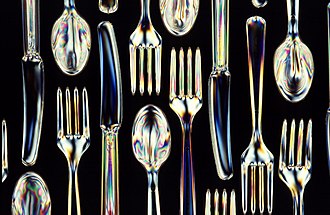Disposable food packaging
Disposable food packaging comprises a wide range of containers and wrappings used to transport, handle, and consume prepared foods. This type of packaging is designed for single use, with the primary goal of convenience, hygiene, and the reduction of contamination during the food distribution and consumption phases. Disposable food packaging includes items such as plastic containers, aluminum foil, paper plates, styrofoam cups, and plastic utensils.
History
The concept of disposable food packaging has evolved significantly over the years. Initially, food was sold in bulk and carried in reusable containers. However, with the industrial revolution and the rise of consumer culture, the demand for convenient and hygienic food packaging solutions increased. The introduction of materials like paper and plastic in the 20th century revolutionized the food packaging industry, making disposable food packaging a common sight in fast food outlets, cafeterias, and at public events.
Materials Used
Disposable food packaging utilizes a variety of materials, each chosen for its specific properties such as durability, cost-effectiveness, and insulation capabilities.
- Plastic: Widely used due to its versatility, plastic can be molded into various shapes and sizes. It is commonly used for bottles, trays, and film wraps.
- Paper: Often used for bags, plates, cups, and napkins. Paper packaging is favored for its biodegradability and recyclability.
- Aluminum foil: Preferred for its ability to retain heat and its impermeability to air and moisture, aluminum is often used for wraps and containers.
- Styrofoam: Known for its insulation properties, styrofoam is commonly used for cups and containers to keep food hot or cold.
Environmental Impact
The widespread use of disposable food packaging has raised environmental concerns. Most disposable packaging, especially plastic and styrofoam, is not biodegradable and contributes significantly to environmental pollution and waste. Efforts to mitigate these impacts include promoting the use of biodegradable materials, recycling, and encouraging the use of reusable containers.
Regulations and Standards
Various international and national agencies regulate the materials and processes used in disposable food packaging to ensure safety and quality. These regulations cover aspects such as material safety, contamination control, and labeling requirements.
Future Trends
The disposable food packaging industry is evolving towards more sustainable practices. Innovations include the development of biodegradable and compostable materials, edible packaging, and improvements in recycling technologies. The goal is to reduce the environmental footprint while maintaining the convenience and hygiene benefits that disposable packaging offers.
See Also
This article is a environment-related stub. You can help WikiMD by expanding it!
Transform your life with W8MD's budget GLP-1 injections from $125.
W8MD offers a medical weight loss program to lose weight in Philadelphia. Our physician-supervised medical weight loss provides:
- Most insurances accepted or discounted self-pay rates. We will obtain insurance prior authorizations if needed.
- Generic GLP1 weight loss injections from $125 for the starting dose.
- Also offer prescription weight loss medications including Phentermine, Qsymia, Diethylpropion, Contrave etc.
NYC weight loss doctor appointments
Start your NYC weight loss journey today at our NYC medical weight loss and Philadelphia medical weight loss clinics.
- Call 718-946-5500 to lose weight in NYC or for medical weight loss in Philadelphia 215-676-2334.
- Tags:NYC medical weight loss, Philadelphia lose weight Zepbound NYC, Budget GLP1 weight loss injections, Wegovy Philadelphia, Wegovy NYC, Philadelphia medical weight loss, Brookly weight loss and Wegovy NYC
|
WikiMD's Wellness Encyclopedia |
| Let Food Be Thy Medicine Medicine Thy Food - Hippocrates |
Medical Disclaimer: WikiMD is not a substitute for professional medical advice. The information on WikiMD is provided as an information resource only, may be incorrect, outdated or misleading, and is not to be used or relied on for any diagnostic or treatment purposes. Please consult your health care provider before making any healthcare decisions or for guidance about a specific medical condition. WikiMD expressly disclaims responsibility, and shall have no liability, for any damages, loss, injury, or liability whatsoever suffered as a result of your reliance on the information contained in this site. By visiting this site you agree to the foregoing terms and conditions, which may from time to time be changed or supplemented by WikiMD. If you do not agree to the foregoing terms and conditions, you should not enter or use this site. See full disclaimer.
Credits:Most images are courtesy of Wikimedia commons, and templates, categories Wikipedia, licensed under CC BY SA or similar.
Contributors: Prab R. Tumpati, MD





